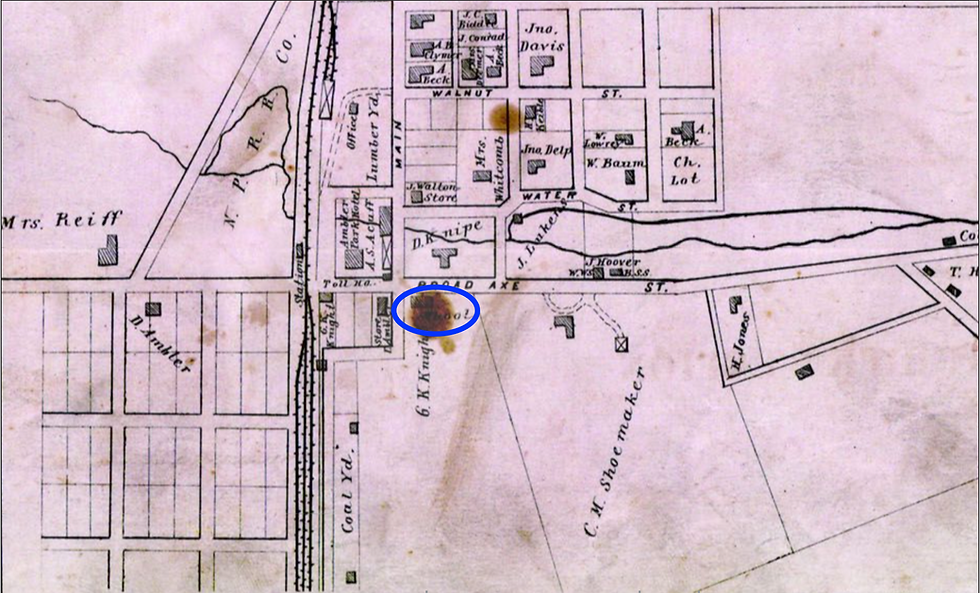Adaptive Reuse in Abandoned Schools
- Yen Ho
- Aug 29, 2020
- 3 min read
Updated: Sep 16, 2021
Did you know that there were still schoolhouses around?
Get this!
Those schoolhouses aren't actually used for educational purposes. They were reused for different purposes.
I found at least 3 schoolhouses that were reused as a home, and as a restaurant. The first one I'll discuss is the Sandy Hill School.
Sandy Hill school is situated at the Six Points, and was first built on ground deeded by Joseph Lukens and wife, Mary, in 1796, to trustees, members of Plymouth Meeting and Society of Friends. The supporters resided in the townships of Whitpain, Plymouth and Whitemarsh, and it was kept open to all that wished to send there.
Jones Detwiler, CHAPTER LXXX: WHITPAIN TOWNSHIP
This quote above is not the Sandy Hill School I was talking about. It turns out that the Sandy Hill School I was talking about was built in 1859, right across from the earlier Sandy Hill School (1796). There's nothing much about this school, but it lasted for 55 years. I guess it was a replacement of the earlier Sandy Hill School after a significant construction campaign in the latter part of the 1850s by the School Directors of Whitpain Township. The five schools including Sandy Hill (Shady Grove, Ellis, Franklinville, and Centre Square) were built due to poor conditions in earlier schools, and the request for additional families.
The schoolhouse was converted into a home in 1917. The garage next to home was used as a small aircraft repair facility in the 1930s for planes at Wings Field across Narcissa Road.



There's nothing much about the Dager School in Lower Gwynedd. It could be that this school was named after the Dager family who possibly established the school right across from their home.
The building was converted into an Italian restaurant called Ristorante San Marco. When you look at the building, you would notice the little four corners school bell tower on top of the building. Surprisingly, the current owners still kept that. Material-wise, it looks like it use to be a stone structure, but covered in yellow-orange stucco.



Another school in Lower Gwynedd called the Maple Grove School was adaptively reused as a home. The school was built in 1877, the same exact year of the historical map below. Nothing much is known afterwards.




The schools I listed above still exist, but in different forms. You can argue that those schoolhouses were not really adaptively reused. When I think about "adaptive reuse," I think about recycling a building into something new. But, in terms of architecture, the building has to stay in its original form and context. Not all people do that, which is possibly the reason why some buildings don't qualify for the National Register of Historic Places.
When people alter/added something to a building, it would lose its context and integrity (an important term in historic preservation). It's possibly because they don't know enough about this building they occupy. That's when historical research and archaeology comes into play. That way, we would discover some architectural elements we want to keep in order to maintain its integrity.
I'm an advocate for old buildings, and keeping them around is a great thing! But what I don't want to see is developers changing the whole appearance of the building. I already seen this situation in the Whitpain area with the Blue Bell Inn and the Boehm's Church with alternations/additions. It's not acceptable!!
Read more about adaptive reuse by clicking here!
Bibliography:
"Distance Calculator." DaftLogic. Accessed July 30, 2020. https://www.daftlogic.com/projects-google-maps-distance-calculator.htm.
Herman, Andrew Mark. Eastern Montgomery County Revisited (Charleston: Arcadia Publishing, 2005): 82.
Hopkins, G.M. Atlas of Montgomery County, Pennsylvania, Page 031, 1871.
Scott, J.D. Montgomery County 1877, Gwynedd, North Wales, Ambler, Royer's Ford, Limerick Station, 1877.




Comments